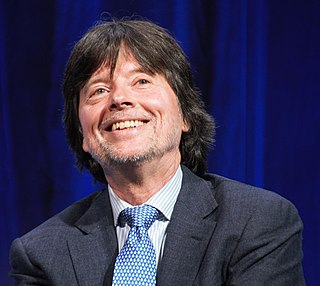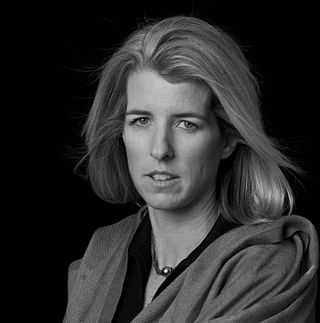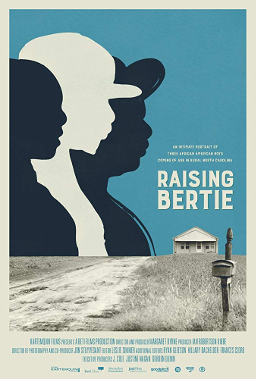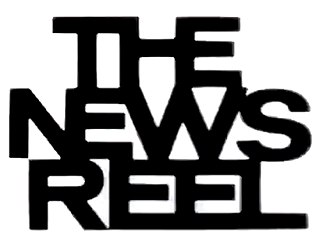
Kenneth Lauren Burns is an American filmmaker and historian known for his documentary films and television series, many of which chronicle American history and culture. His work is often produced in association with WETA-TV and/or the National Endowment for the Humanities and distributed by PBS.
The Alfred I. duPont–Columbia University Award honors excellence in broadcast and digital journalism in the public service and is considered one of the most prestigious awards in journalism. The awards were established in 1942 and administered until 1967 by Washington and Lee University's O. W. Riegel, Curator and Head of the Department of Journalism and Communications. Since 1968 they have been administered by the Columbia University Graduate School of Journalism in New York City, and are considered by some to be the broadcast equivalent of the Pulitzer Prize, another program administered by Columbia University.

Rory Elizabeth Katherine Kennedy is an American documentary filmmaker. Kennedy has made documentary films that center on social issues such as addiction, her opposition to nuclear power, the treatment of prisoners-of-war, and the politics of the Mexican border fence. She is the youngest child of U.S. Senator Robert F. Kennedy and Ethel Skakel.

Courtney Bernard Vance is an American actor. He started his career on stage before moving to film and television. Vance has received various accolades, including a Tony Award and two Primetime Emmy Awards, as well as nominations for a Grammy Award, Golden Globe Award, and Screen Actors Guild Award.

Wesley Studi is a Native American actor and film producer. He has garnered critical acclaim and awards throughout his career, particularly for his portrayal of Native Americans in film. In 2019, he received an Academy Honorary Award, becoming the first Native American as well as the first Indigenous person from North America to be honored by the academy.

Sir! No Sir! is a 2005 documentary by Displaced Films about the anti-war movement within the ranks of the United States Armed Forces during the Vietnam War. The film was produced, directed, and written by David Zeiger. The film had a theatrical run in 80 cities throughout the U.S. and Canada in 2006, and was broadcast worldwide on Sundance Channel, Discovery Channel, BBC, ARTE France, ABC Australia, SBC Spain, ZDF Germany, YLE Finland, RT, and several others.

Steven Pressman is an American documentary filmmaker, journalist, author of two books, and director/producer of the documentary film 50 Children: The Rescue Mission of Mr. and Mrs. Kraus.

Stephen Henderson Talbot is a TV documentary producer, reporter and writer. Talbot directed and produced "The Movement and the 'Madman' " for the PBS series American Experience in 2023. He is a longtime contributor to the Public Broadcasting Service (PBS) and worked for over 16 years for the series Frontline.

Jon Alpert is an American journalist and documentary filmmaker, known for his use of a cinéma vérité approach in his films.
Francine Parker was an American television and film director, who was one of the first female members of the Directors Guild of America. Parker was best known for her controversial documentary, F.T.A., which chronicled the antiwar entertainers tour, Free The Army tour (FTA), during the Vietnam War. The FTA tour and its documentary featured anti-Vietnam War celebrities Jane Fonda and Donald Sutherland interacting very frankly with American soldiers. Parker's film, which was released in 1972, was pulled from theaters within weeks of its release due to heavy criticism. It has been rarely viewed since 1972.
Doan Hoang or Đoan Hoàng or Doan Hoàng Curtis is a Vietnamese-American documentary film director, producer, editor, and writer. She directed and produced the 2007 documentary Oh, Saigon about her family, after leaving Vietnam on the last civilian helicopter as Saigon fell. The documentary won several awards at film festivals and was broadcast on PBS from 2008 to 2012, and multiple channels at streaming services. Hoang was selected to be a delegate to Spain for the American Documentary Showcase. Hoang has received awards and grants from the Sundance Institute, ITVS, Center for Asian American Media, the Ms. Foundation for Women, Brooklyn Arts Council, and National Endowment of the Humanities.

Bill Guttentag is an American dramatic and documentary film writer-producer-director. His films have premiered at the Sundance, Cannes, Telluride and Tribeca film festivals, and he has won two Academy Awards.

Enemies of the People is a 2009 British-Cambodian documentary film written and directed by Rob Lemkin and Thet Sambath. The film depicts the 10-year quest of co-director Sambath to find truth and closure in the Killing Fields of Cambodia. The film features interviews of former Khmer Rouge officials from the most senior surviving leader to the men and women who slit throats during the regime of Democratic Kampuchea between 1975 and 1979.

F.T.A. is a 1972 American documentary film starring Jane Fonda and Donald Sutherland and directed by Francine Parker, which follows a 1971 anti-Vietnam War road show for G.I.s, the FTA Show, as it stops in Hawaii, The Philippines, Okinawa, and Japan. It includes highlights from the show, behind the scenes footage, local performers from the countries visited, and interviews and conversations with GIs "as they discuss what they saw in battle, their anger with the military bureaucracy, and their opposition to America's presence in Indochina." Called by Fonda "a spit and a prayer production" it was far from a big budget Hollywood movie, or even a well-funded documentary. While the movie "is raw," it "underscores how infectious the movement of the 60s and 70s was", and chronicles both the Tour itself as well as the soldiers who came to see it and "the local talent of organizers, labor unions and artist/activists" in the countries visited.

Tiana Alexandra-Silliphant is a Vietnamese-American actress and filmmaker. Her indie movie From Hollywood to Hanoi [1] was the first American documentary feature film shot in Vietnam by a Vietnamese-American. Tiana's life's work, Why Viet Nam?, is about her personal story as a child of war and a widow of peace.

My Lai is a documentary film detailing the My Lai massacre. It aired as an episode of American Experience on PBS.

Raising Bertie is a 2016 American documentary film directed by Margaret Byrne and produced by Ian Robertson Kibbe, Margaret Byrne, and Jon Stuyvesant. It was distributed by Kartemquin Films and aired in shortened form on the 30th season of PBS's documentary series POV on August 28, 2017.

Terry Marvell Whitmore was an American soldier, deserter and actor.

The Newsreel, most frequently called Newsreel, was an American filmmaking collective founded in New York City in late 1967. In keeping with the radical student/youth, antiwar and Black power movements of the time, the group explicitly described its purpose as using "films and other propaganda in aiding the revolutionary movement." The organization quickly established other chapters in San Francisco, Boston, Washington, DC, Atlanta, Detroit, Chicago, Los Angeles, Washington, DC and Puerto Rico, and soon claimed "150 full time activists in its 9 regional offices." Co-founder Robert Kramer called for "films that unnerve, that shake people's assumptions…[that] explode like grenades in people’s faces, or open minds like a good can opener." Their film's production logo was a flashing graphic of The Newsreel moving in and out violently in cadence with the staccato sounds of a machine gun. A contemporary issue of Film Quarterly described it as "the cinematic equivalent of Leroi Jones's line 'I want poems that can shoot bullets.'" The films produced by Newsreel soon became regular viewing at leftwing political gatherings during the late 1960s and early 1970s; seen in parks, church basements, on the walls of buildings, in union halls, even at Woodstock." This history has been largely ignored by film and academic historians causing the academic Nathan Rosenberger to remark: "it is curious that Newsreel only occasionally shows up in historical studies of the decade."




















